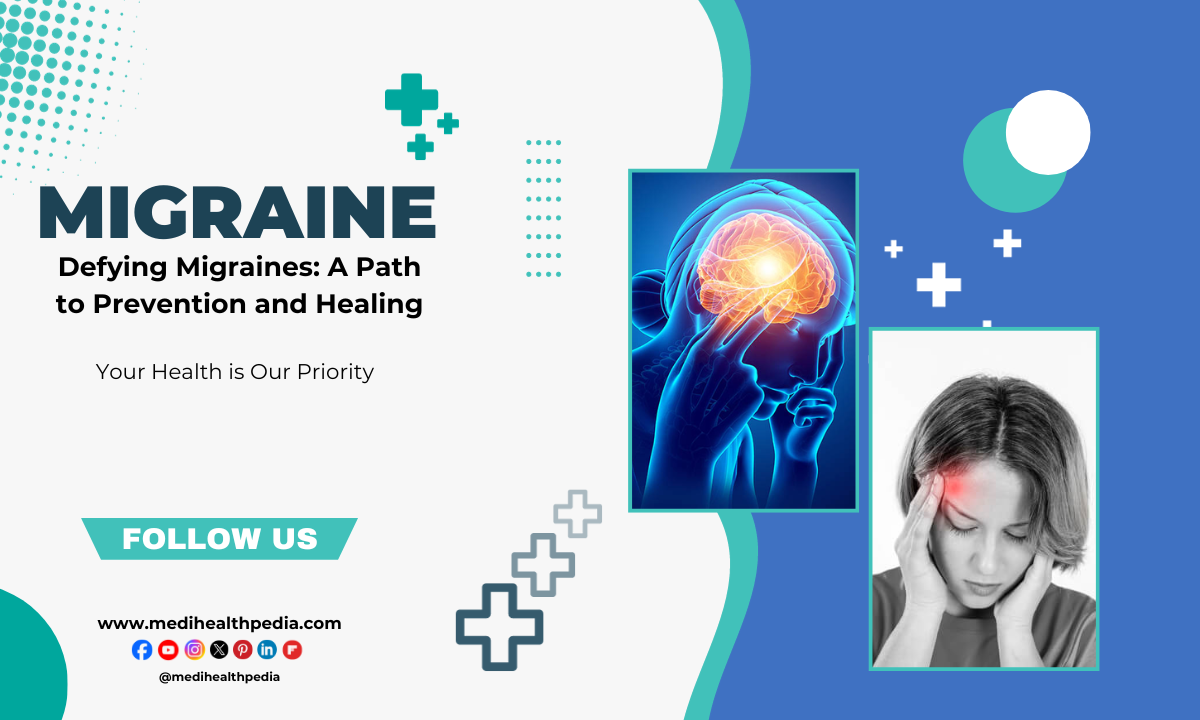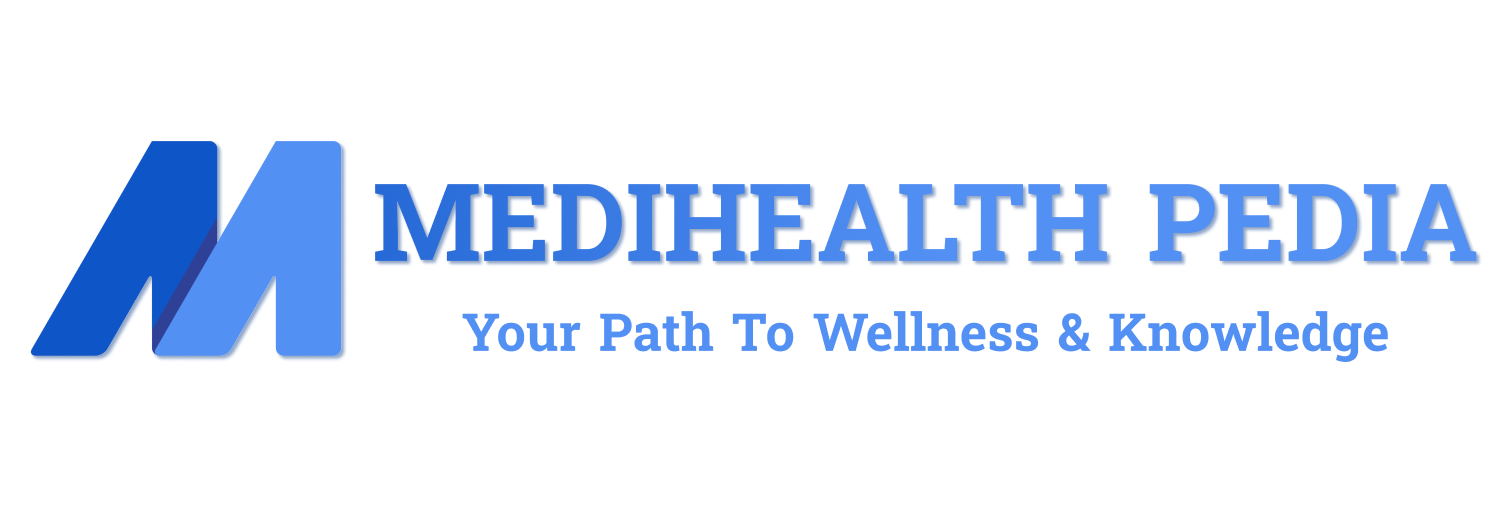Navigating Migraine Headaches: Expert Strategies for Understanding, Treating, and Preventing
Introduction
Migraine headaches are more than just severe headaches; they are a complex neurological condition that affects millions of people worldwide. These debilitating headaches can significantly impact a person’s quality of life. In this comprehensive guide, we will delve into the intricacies of migraine headaches, exploring their clinical overview, clinical presentation, basic investigations, conventional treatments, preventive strategies, herbal remedies, lifestyle modifications, and ultimately provide insights into managing this challenging condition.

Clinical Overview
Migraines are characterized by severe, throbbing headaches that are often accompanied by a range of other symptoms. They are one of the most prevalent neurological disorders, affecting approximately 1 in 7 people globally, with women being more susceptible than men.
Key features of migraines include:
- Unilateral Pain: Migraine headaches typically manifest on one side of the head, although they can sometimes affect both sides.
- Pulsating Throbbing Pain: The pain associated with migraines is often described as a pulsating or throbbing sensation, which can become increasingly intense.
- Duration: Migraines can last anywhere from a few hours to several days. The pain is often severe and disabling, leading to decreased functionality during an episode.
- Associated Symptoms: Migraines often come with a range of other symptoms, such as nausea, vomiting, sensitivity to light (photophobia), and sensitivity to sound (phonophobia).
- Auras: Some individuals experience auras before the onset of a migraine. Auras are temporary neurological disturbances that can manifest as visual disturbances, such as flashing lights, zigzag lines, or blind spots. Auras can also involve sensory disturbances or speech difficulties.
- Triggers: Migraines can be triggered by various factors, including hormonal changes (in women), specific foods, stress, lack of sleep, bright lights, strong odors, and weather changes.
Clinical Presentation
Migraine headaches present with a range of symptoms that can vary from one individual to another and from one episode to the next. The key clinical presentations of migraines include:
- Pain: The hallmark of a migraine is the severe and throbbing headache. This pain can be localized to one side of the head but can also involve the entire head. It is often described as pulsating and is aggravated by physical activity.
- Nausea and Vomiting: Many migraine sufferers experience nausea, which can progress to vomiting during an episode. This can further complicate the experience of the migraine.
- Sensitivity to Light (Photophobia): Bright lights, including sunlight, can intensify migraine symptoms. Many people with migraines seek dark and quiet environments during an attack.
- Sensitivity to Sound (Phonophobia): Loud noises and even regular sounds that wouldn’t typically bother someone can become unbearable during a migraine.
- Aura: As mentioned earlier, some individuals experience auras before the headache. These visual or sensory disturbances can serve as a warning sign that a migraine is imminent.
- Other Neurological Symptoms: In rare cases, migraines can lead to more complex neurological symptoms, such as confusion, weakness, or difficulty speaking.
Basic Investigations
Diagnosing migraines is primarily a clinical process, as there are no specific diagnostic tests for this condition. Healthcare professionals rely on the patient’s medical history and a thorough physical examination to establish a diagnosis. However, in some cases, additional tests may be ordered to rule out other potential causes of headache. These investigations can include:
- Neuroimaging: Brain imaging, such as MRI or CT scans, may be ordered if there are atypical features in the presentation, the patient’s medical history suggests the possibility of another condition, or if there is a sudden and severe change in headache characteristics.
- Blood Tests: These may be conducted to rule out other causes of headache, such as infections or metabolic disorders.
Conventional Treatment
Migraine management can involve both acute treatment to relieve pain during an attack and preventive measures to reduce the frequency and intensity of migraine episodes. Conventional treatments include:
- Acute Medications:
- Over-the-Counter Pain Relievers: Non-prescription drugs like ibuprofen, aspirin, and naproxen sodium can help alleviate mild migraines.
- Prescription Medications: Triptans are commonly prescribed for moderate to severe migraines. They work by narrowing blood vessels and reducing pain signals in the brain. Other prescription medications may also be used, depending on the specific characteristics of the migraine.
- Preventive Medications:
- For individuals with frequent or severe migraines, a healthcare provider may recommend preventive medications. These can include beta-blockers, antidepressants, anticonvulsants, or CGRP (calcitonin gene-related peptide) inhibitors.
- Lifestyle Modifications:
- Lifestyle changes are essential for managing migraines effectively. These can include:
- Dietary Adjustments: Identifying and avoiding migraine trigger foods, such as aged cheese, processed meats, and caffeine.
- Stress Reduction: Techniques like relaxation exercises, mindfulness, and meditation can help manage stress, a common migraine trigger.
- Regular Sleep: Maintaining a regular sleep schedule and improving sleep quality.
- Hydration: Staying adequately hydrated can reduce the likelihood of a migraine.
- Regular Exercise: Engaging in physical activity can help reduce stress and promote overall well-being.
- Lifestyle changes are essential for managing migraines effectively. These can include:
- Abortive Medications:
- Some individuals benefit from medications that can stop a migraine attack in progress. These include triptans, ergot alkaloids, and anti-nausea medications.
- Devices and Procedures:
- In some cases, devices like transcranial magnetic stimulators (TMS) and procedures like nerve blocks may be considered as alternatives for migraine relief.
Prevention
Preventing migraines is often more desirable than treating them once they occur. Preventive strategies include:
- Identify and Avoid Triggers:
- Keeping a headache diary to track potential triggers and patterns can help identify and avoid these triggers.
- Stress Management:
- Practicing stress-reduction techniques like mindfulness, meditation, and progressive muscle relaxation.
- Dietary Adjustments:
- Identifying and avoiding foods and drinks that can trigger migraines, such as alcohol, caffeine, and specific additives.
- Regular Sleep Schedule:
- Maintaining a consistent sleep routine, which includes going to bed and waking up at the same times every day.
- Hydration:
- Ensuring proper hydration by drinking an adequate amount of water throughout the day.
- Regular Exercise:
- Engaging in regular physical activity to reduce stress and promote overall well-being.
Herbal Medicines
Herbal remedies have been explored as complementary or alternative treatments for migraines. It’s important to emphasize that herbal treatments should be used with caution and in consultation with a healthcare professional, as they may interact with other medications or have side effects. Some herbal remedies that are commonly considered for migraine treatment include:
- Feverfew:
- Feverfew is often used as a preventive treatment for migraines. It can be taken in various forms, such as capsules, teas, or tinctures.
- Butterbur:
- Butterbur supplements have shown promise in reducing the frequency and severity of migraines when taken as a preventive measure.
- Ginger:
- Ginger has anti-inflammatory properties and may help relieve migraine symptoms. It can be consumed as a tea or added to meals.
- Peppermint Oil:
- Topical application of peppermint oil to the temples and forehead may provide a cooling sensation that can help ease migraine pain.
- Lavender Oil:
- Lavender oil can be inhaled or applied topically to promote relaxation and reduce migraine symptoms.
- Riboflavin (Vitamin B2):
- Some studies suggest that riboflavin supplements may reduce the frequency and severity of migraines.
Lifestyle Modifications
Lifestyle modifications play a pivotal role in managing and preventing migraines. Adopting the following lifestyle changes can help reduce the frequency and severity of migraine episodes:
- Regular Sleep Schedule:
- Maintaining a consistent sleep routine and creating a conducive sleep environment can significantly impact migraine frequency.
- Stay Hydrated:
- Drink an adequate amount of water throughout the day and limit the consumption of caffeine and alcoholic beverages.
- Dietary Choices:
- Identify and avoid trigger foods that may be contributing to your migraines.
- Stress Reduction:
- Engage in stress-reduction techniques, such as mindfulness, meditation, and deep breathing exercises.
- Regular Exercise:
- Incorporate physical activity into your routine to reduce stress and promote overall well-being.
Conclusion
Migraine headaches are a challenging and prevalent neurological condition that affects millions of individuals. Understanding the clinical overview and presentation of migraines, along with adopting conventional treatments, preventive strategies, herbal remedies, and lifestyle modifications, can significantly improve the management of this condition.
While conventional treatments play a crucial role in relieving the pain associated with migraines, lifestyle adjustments and preventive measures are equally important for long-term management. Herbal remedies, when used judiciously and in consultation with a healthcare professional, can complement conventional treatments.
If you experience migraines, it’s crucial to work closely with a healthcare provider to develop a personalized treatment plan that takes into account your specific symptoms, triggers, and medical history. With the right approach, migraine management is possible, and the impact of these debilitating headaches can be mitigated, allowing for a better quality of life.

